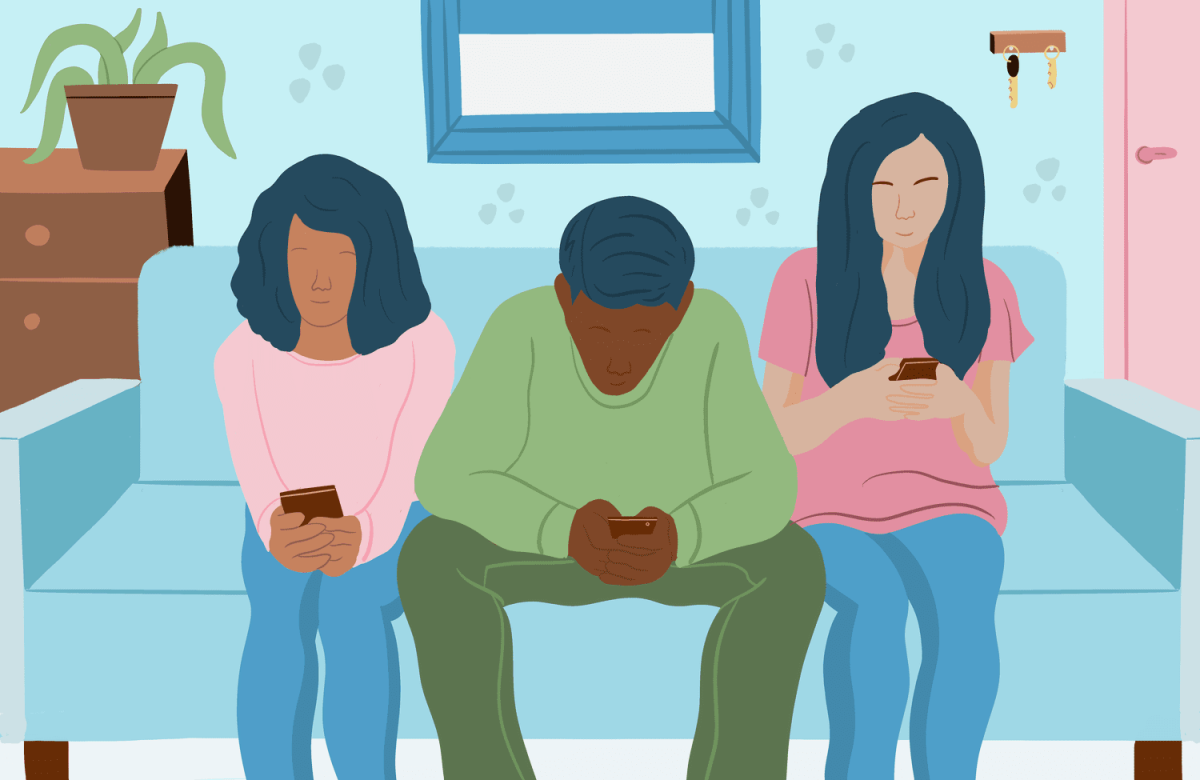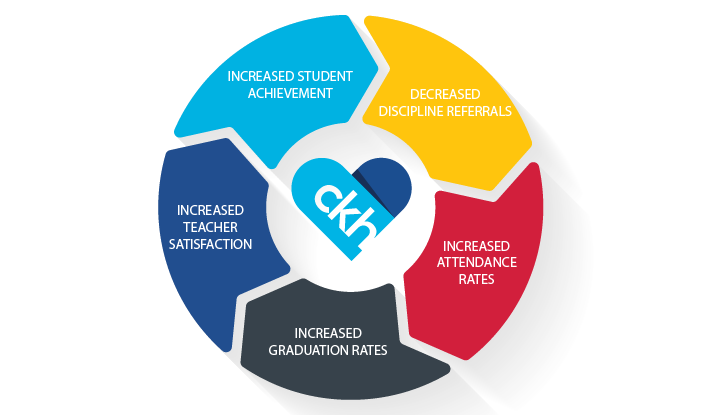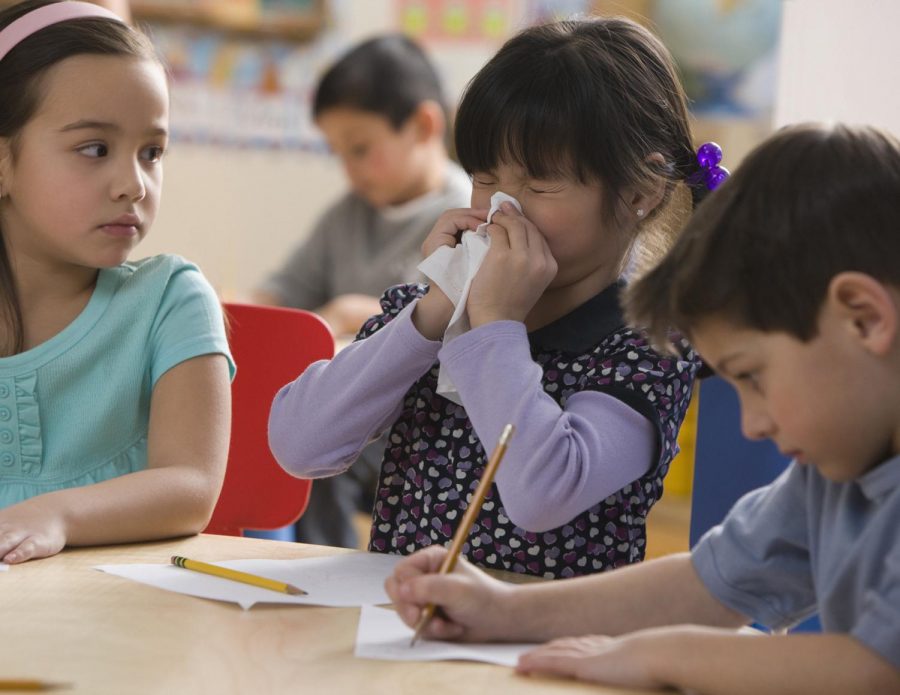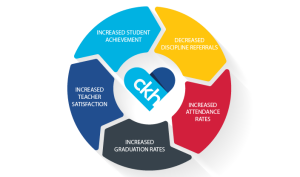How Sick is Sick?
December 12, 2018
It starts with a sniffle. No more, no less, a sound that you naturally tune out as you go about your daily business. But that one sniffle was the calm before the storm. The next day, you can’t concentrate on your math test because everyone is constantly blowing their nose. The day after, you get sneezed on at lunch. Soon enough, you’re wiping your own nose and wishing you could go home.
Once sickness is introduced to Legacy High School, it thrives amidst nose-blowing, hacking coughs, and high fevers. You have to wonder: maybe those sick students shouldn’t be at school, even if they feel okay. Because how sick is too sick?
District Policy
Even though they want you to be at school, Adams 12 Five Star Schools draws the line in some cases. According to the Adams 12 website, being too sick to go to school includes a range of symptoms. Some are obvious: do not attend school if you are vomiting, have diarrhea, are in severe pain, or even have “yellow or green drainage from eye(s).” A student is also prescribed to stay home if they have a contagious disease or the flu.
The common cold is not mentioned in Adams 12 district policy. However, it is mentioned that if a student has a “disruptive” cough, they should probably not attend school.
Kirsten Blunt, Legacy’s main Health Aide employed under the district nurse, has to uphold these policies, and determine if a student is really sick enough to go home.
According to Ms. Blunt, no student is ever allowed to go home with a “common cold.” The reasoning behind this is that every place has germs, some of which aren’t necessarily bad, so it’s very easy to get a small cold. District policy itself says that a student has to have a fever of at least 101.5 Fahrenheit to be allowed to go home when it comes to colds and flus.
But sickness doesn’t always come in numbers.
“It’s not always a rule of thumb to stay home or to push through,” Ms. Blunt said. “It kind of depends on how you are feeling too.”
For example, with fevers, some students feel fine at 102 degrees. Others are ready to go home at 101 degrees, which is below district policy.
District policy also states that students who have the flu must not come to school. Resting is the only thing that will help the student recover from the illness, not busying themselves at school. Staying home also protects other students.
In the health office, the rule of thumb is to make a student lay down for ten minutes (if they aren’t obviously sick). If they don’t feel better by then, then it might be time to call Mom.
“If we can keep people here at school, that is what we are going to try to do,” she added.
Legacy Opinions
However, there are some minor disagreements with district policy. Ms. Dumas, who teaches World Studies and L2K, believes that the district fever temperature should be dropped to 100.5 degrees. She also believes that students should be allowed to carry certain pain-relievers medicines, such as Advil and Tylenol.
When talking about the medicines, Ms. Dumas said, “I don’t believe they’re habit-forming. I don’t believe that anything is going to happen to them, other than throw-up.” Specifically, she thinks that these medicines should be available for students with migraines or chronic headaches. She thinks that students should be able to get fast and easy relief in situations like this.
Ms. Dumas also knows that students can get a doctor’s note for these medications. But she argues that this is inconvenient.
“Every time you have to go to the nurse’s office, who may be busy with other students, and you have to wait….let the kid have Advil. Let him carry it.”
The only thing the district allows currently is cough drops.
And where headaches are concerned, it only states that a student with a severe headache should go home. It never defines “severe.”
At the same time, others agree with this policy. Daniel Riggin is a Legacy sophomore. “I think the policy is fine,” he said when asked about it. “Especially seeing as students do not necessarily have to go to the nurse when they leave.” By this, he means that it is very easy for a student to simply call in sick or for a parent to sign them out of school.
He does think, though, that the 101.5 degrees rule could be lowered. People usually use 100.4 degrees as the beginning of a fever. That is 1.1 degrees lower than what the district has in their policy.
Protect Yourself
According to Ms. Blunt, there are two main things to do to protect yourself and others. The first is a no-brainer: wash your hands. Touching something as simple as a door handle could transfer a week-load’s of germs to you. So wash your hands, and wash them good.
“Wash your hands before you eat, wash your hands after you eat, wash your hands while you’re here,” Ms. Blunt emphasized. Many students don’t, even though it is one of the simplest ways to stay safe from getting sick.
And, even if you are already sick, help protect others. The easiest way to do this is to cover your sneezes. When left uncovered, the germs from a sneeze can be propelled 200 feet, according to a MIT study. That’s a surprise no one wants.
“All of the sudden, you will have one person that comes in that has a cold,” Ms. Blunt said. “The next day it’s ten people, then it’s thirty. That’s how fast it will spread.”
So not only wash your hands, but be considerate to other students.
The Rule of Thumb
It’s true that illnesses can affect people in different ways. So even if your body temperature is below 101.5 degrees or you aren’t throwing up your breakfast, take a moment and feel. Ask yourself: do I really feel good enough to go to school?
The best rule of thumb is to stay home if you aren’t feeling good. Despite the belief that sometimes you just need to “chug through the day,” when you’re sick, you need rest. You can always make up that test or assignment. You need time to heal and relax. Stay home.
Besides, everyone is sick of you sneezing on them.

Top photo courtesy of Rocky Mountain Hospital for Children









































